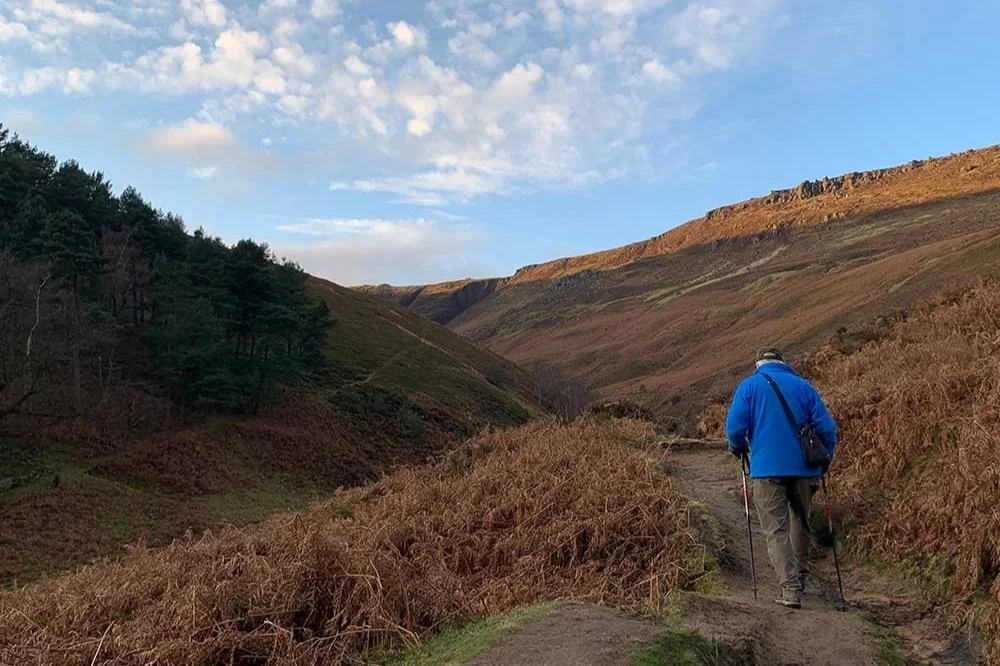Change in the Air: Footfall in the Peak District Post-Lockdown
As lockdowns lifted, there was a palpable shift in the energy of the Peak District. The valleys, unusually quiet and serene for such an extended period, began to buzz again with visitors. Technical wear mingled with lycra and denim, boots and heavy-tread shoes shared paths with flip-flops and plimsolls. Picnic baskets and rucksacks were joined by wireless speakers and cases of beer, creating a vibrant, eclectic mix of outdoor enthusiasts.
Suddenly, the peaks and valleys were alive with people from all walks of life. It seemed this Great Outdoors had reached a new, broader audience, transforming the landscape into a bustling hub of activity and perhaps a younger demographic than ever before and the sudden increased footfall brought with it a unique set of challenges and opportunities for local communities.
A New Market
The surge in visitors post-lockdown highlighted the Peak District's appeal to a wider demographic. Families, young adults, and individuals seeking solace in nature flocked to the hills, eager to escape the confines of their homes. This influx brought much-needed business to local shops, cafes, and accommodation providers, many of whom had struggled during the pandemic.
"We've never seen anything like it," said Jane, a local café owner. "The number of people coming through our doors has been incredible. It's been a lifeline for us after such a tough year."
Growing Pains
Despite the economic boost, the sudden increase in visitors also brought significant challenges. The picturesque landscapes and tranquil paths of the Peak District began to show signs of strain. Litter became a common sight, with picnic remnants and plastic bottles marring the natural beauty. Parking verges were damaged as people sought free spots, causing frustration among locals who took pride in maintaining their environment.
"Every weekend, we find ourselves picking up rubbish left behind by visitors," lamented John, a resident of Edale. "It's disheartening to see our beautiful valley treated this way."
The Need for Resources
The surge in footfall underscored the lack of resources focused on managing the influx of visitors and educating them about responsible tourism. Local authorities and businesses struggled to balance welcoming new visitors with preserving the area's natural beauty and character. The gap in resources was particularly noticeable at a local level, where tensions occasionally flared between frustrated residents and businesses desperate for increased foot traffic.
"There's a real need for more education and support," explained Sam, a local business owner "If we can inform visitors about how to enjoy the Peak District responsibly, it will benefit everyone – the environment, the locals, and the tourists themselves."
Missed Opportunities
The increase in visitors presented missed opportunities for better engagement and education. Many visitors were unfamiliar with the best practices for exploring such a delicate environment. Without proper guidance, the risk of environmental damage and local conflicts increased. This highlighted the need for improved infrastructure and educational initiatives.
Some local businesses and community groups have started to take matters into their own hands. Volunteer-led clean-up events and information campaigns aim to raise awareness about the importance of preserving the Peak District's natural beauty. However, more coordinated efforts were needed to make a significant impact.
Moving Forward
As the Peak District continues to attract visitors, there is a growing recognition of the need for sustainable tourism practices. Investing in better resources, from informative signage to dedicated visitor centers, can help manage the flow of people and minimise environmental impact. Educating visitors on responsible behaviour, such as sticking to designated paths and taking litter home, is crucial for maintaining the area's pristine condition.
"Education is key," emphasised Mark, a ranger with the Peak District National Park. "We need to ensure that everyone who visits understands the importance of protecting this unique landscape. It's about creating a culture of respect and responsibility."
Embracing Change
The post-lockdown era has undoubtedly brought change to the Peak District. While the challenges are significant, so too are the opportunities for growth and improvement. By embracing this new wave of visitors and providing them with the tools and knowledge to explore responsibly, the Peak District can continue to thrive as a cherished destination for generations to come.
Conclusion
The Peak District's transformation post-lockdown serves as a reminder of the delicate balance between welcoming visitors and preserving natural beauty. As footfall increases, so too must efforts to educate, inform, and support those who come to experience this stunning landscape. With the right resources and a collective commitment to conservation, the Peak District can remain a vibrant, sustainable destination that continues to captivate and inspire all who visit.




